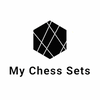The Enigmatic Origins of Chess
One of the world's oldest games, chess, boasts a rich history that spans over a millennium. The game, as we know it today, is the result of centuries of evolution, influenced by various cultures and civilizations. Its origins, though not entirely clear, are generally traced back to the Indian subcontinent during the Gupta Empire around the 6th century AD.
The Indian Beginnings - Chaturanga
The earliest precursor to chess is believed to be a game called 'Chaturanga,' which translates to 'four divisions of the military.' It referred to infantry, cavalry, elephantry, and chariotry, which were represented on the board by pieces much like the modern pawn, knight, bishop, and rook, respectively. Played on an 8x8 grid, Chaturanga was not just a game of leisure but also a reflection of the strategic and tactical military paradigms of the day.
Persian Transformations - Shatranj
The game spread from India to Persia, where it evolved into a form known as 'Shatranj.' With the Islamic conquest of Persia, chess further penetrated the Islamic world, becoming an integral part of courtly life. The Persian version retained much of the structure of Chaturanga, but the rules began to evolve. For instance, the piece that would eventually become the queen was then known as the vizier, possessing limited movement compared to its modern counterpart.
Arab Contributions and European Adoption
As the influence of the Islamic empires expanded across North Africa into medieval Spain and Portugal, chess moved with it. By the middle ages, it had become deeply embedded in the fabric of European culture. The game underwent significant transformations as it merged with European cultural ideals. By the 15th century, the rules of chess had evolved substantially to include the powers of the bishop and queen, setting the stage for what we recognize today as modern chess.
The Chinese and Japanese Versions
While chess was taking root in Europe, parallel developments were occurring in the Far East. In China, a game called 'Xiangqi,' or Chinese chess, took shape. Xiangqi shares some similarities with chess but is distinct in gameplay, pieces, and strategy. Japan developed its variant called 'Shogi,' which incorporated drop rules, allowing captured pieces to be returned to the board under the captor’s control.
The Role of Chess in Cultural and Intellectual History
Throughout its history, chess has been more than just a game. It has served as a metaphor for various philosophical and cultural discourses, a tool for military strategy, and a benchmark for artificial intelligence studies. The game's ability to balance pure skill with artistic creativity makes it a microcosm of the intellectual struggles of human history.
Modern Chess and Its Global Legacy
Today, chess is universally acknowledged as a game that sharpens mental faculties, enhances strategic thinking and fosters intellectual prowess. Notably, the 20th century witnessed the rise of grandmaster tournaments, the establishment of standard rules, and the introduction of the chess clock. More recently, the internet has revolutionized how chess is played and learned, making it accessible to a global audience and ensuring its popularity continues to grow in the 21st century.
Conclusion
From ancient Chaturanga to modern international chess tournaments, chess has traversed a remarkable journey across civilizations and epochs. Its fascinating evolution mirrors the cultural exchanges among human societies. Even as it continues to evolve, the essence of chess as a battle of wits remains unchanged, captivating the minds of players around the world.
Explore our large collection of luxurious chess sets!